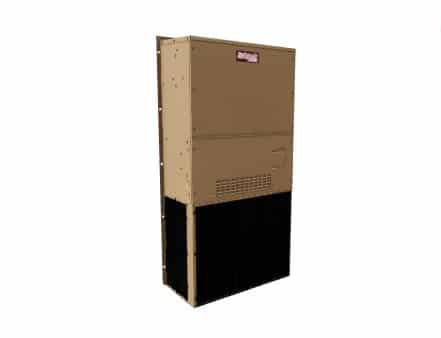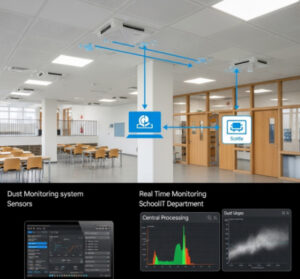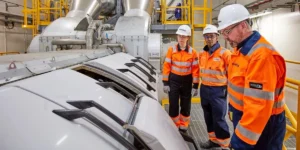What is Wall Cooling And What Else Do You Need to Know?

When you think about air conditioning in a home or building, you probably picture a “traditional” central air system with an outdoor compressor that delivers cool air through ducts and vents. And while it’s true that many homes and commercial buildings utilize central air conditioning, the reality is that more and more consumers are making the switch to wall-mounted cooling units.
Even if you’ve never heard of a wall-mounted cooling unit, there’s a very good chance you’ve seen these in action for yourself. By better understanding what these systems are, how they operate, and their many benefits, you can be better informed about AC options in your own home.
What is a Wall-Mounted Cooling Unit?
There are a couple of variations of a wall-mounted cooling unit. For starters, a mini-split wall-mount is two individual systems connected by an umbilical that includes refrigerant lines and power. The evaporator is mounted inside the conditioned space, while the condenser is mounted outside the conditioned space.
With this type of system, an outdoor compressor unit delivers cool air not through ductwork and vents in a home but directly to individual wall-mounted units (also known as air handlers) that are installed inside the building. This wall mount type requires an HVAC technician to install the refrigerant lines between the two units.
A package wall-mount unit, known as a Single Package Vertical Unit or SPVU, is usually pre-charged with refrigerant from the factory that has both the evaporator and condenser built into one package. This type of wall mount unit can be ducted or ductless. The unit is mounted on the exterior wall, with supply and return air openings.
Although ductwork is optional, it can be put on the supply opening to help disperse the air. Because the entire system is housed in one cabinet and mounted to the exterior of the building, they are excellent for applications where a building needs to be portable.
Benefits of Wall-Mounted Cooling Systems
Wall-mounted cooling systems are becoming increasingly popular across the United States and worldwide. And it’s no surprise, as this innovative cooling system offers several advantages to homeowners and business owners alike.
The advantages wall-mounted air conditioners have over mini-split and central systems are dehumidification and ventilation. All units can heat and cool a space, but SPVU wall mounts can have active dehumidification creating more comfortable, healthy air.
When humidity is kept below 50%, mold is unable to grow. And in regards to ventilation, because wall mounts have direct access to the outside air, installing a ventilator or energy recovery ventilator ensures a fresh stream of outdoor air that can circulate in the conditioned space.
In addition to being extremely versatile, wall cooling systems are very energy efficient. In some ways, installing a wall cooling system can pay for itself over time when considering the savings you’ll enjoy on your energy bills.
Lastly, wall cooling systems offer unrivaled temperature control through zoning. Typically mini-splits are better at zoning, but if you have a school, each room can be zoned similarly to a hotel with a wall unit. And teachers certainly love the ability to control their own room temperature.
Unlike a traditional air conditioning system that uses ductwork and vents to cool the entire home to the same temperature, wall cooling units can be individually temperature controlled. For added convenience, most air handlers come with a remote control so that you can adjust the temperature within the space without even having to get up and manually change the settings on a thermostat.
Other Considerations of Wall Cooling
If you’re thinking about adding a wall cooling system to your mobile commercial building, portable classroom, or existing building, there are a few things worth keeping in mind before you get started.
First, it’s always a good idea to consult with an HVAC professional specializing in wall-mounted systems. This type of professional will be able to come out to your home and ensure that a wall-mounted unit is the best choice based on your square footage, the layout of your space, your budget, and your specific cooling needs.
From there, they will be able to make recommendations on a system that may be right for you and help you decide on the number and placement of individual air handlers.
Wall Cooling Systems: The Bottom Line
As more business owners begin to realize the benefits of wall-mounted cooling systems, many are making the switch. Wall cooling systems can be mounted on a wall with heat, cool, ventilation, and dehumidification all in one portable package. These systems are easy to use, inexpensive to maintain, and can keep each space/zone at the desired temperature.
The next step? Find a reputable contractor who has plenty of experience installing and servicing these units so you can determine whether your project is suitable for wall-mounted cooling.







